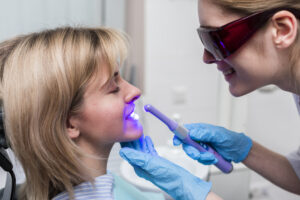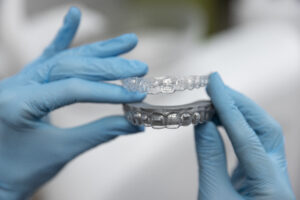The Rise of Digital Technology in Dentistry Today
The way dentists work is transforming rapidly thanks to digital technology in dentistry. New tools and methods are changing how dental problems are detected and treated. This section explores key innovations reshaping dental care.
Capturing Oral Details with New Imaging Tools
Intraoral scanners are replacing traditional messy impressions. These devices use light, lasers, or video to quickly create precise 3D models of your teeth. Scans are accurate and comfortable, helping dentists design crowns or braces more efficiently.
Intraoral cameras, tiny wands with built-in lighting and magnification, let dentists and patients see dental conditions on a screen in real time. They help spot early decay or small cracks that might otherwise go unnoticed.
Together, scanners and cameras make the dental visit smoother and help clinicians explain issues clearly. They also reduce the need for repeat visits because the information captured is more precise.
Digital Workflows: CAD/CAM, 3D Printing, AI
One of the most significant game changers has been CAD/CAM technology (computer-aided design and manufacturing). Dentists can capture a scan, design a restoration on a computer, and then either mill or 3D-print the crown, bridge, or other appliances right in the office. This cuts out the usual wait for lab work and lets patients leave with actual restorations more quickly.
3D printing takes this further. It’s now possible to print surgical guides, temporary crowns, aligners, and other tools swiftly. This keeps dental treatment fast and accurate.
On the intelligence side, artificial intelligence (AI) has been applied to cone-beam CT scans (CBCT) and dental imaging. AI can detect problems, measure bone thickness, classify malocclusions, and help with planning, making diagnosis more accurate and consistent.
Reaching Patients from a Distance and New Mini-Tech Repair Options
Teledentistry has become more popular, especially with better internet and the need for remote care. Through video consultations and secure image-sharing, dentists can evaluate problems, give advice, or guide local providers even if patients are far away.
In a few years, researchers hope to create nanobots and regenerative gels that can repair enamel or restore sensitivity without the need for drilling. One example: tiny magnetic bioceramic bots travel into the tooth’s inner channels, plug them, and stop pain from sensitivity with a single application. Another promising avenue involves keratin—a protein found in wool and hair—that can form enamel-like protective coatings stronger than current resins.
What Digital Technology in Dentistry Means for the Future
Innovation in dental technology is not just about shiny gadgets—it changes care for both patients and professionals. Let’s see what’s on the horizon.
Precision, Safety, and Speed with Robotics and Smart Platforms
Robotics is stepping into dental care. One tech firm conducted a fully automated tooth-cutting procedure using AI-guided robotic arms. The system scans, plans, and executes with high precision—up to 90% accuracy—faster than traditional methods.
Smart systems and cloud platforms are also streamlining dental work. With data and software hosted in the cloud, dentists can access patient data from anywhere, shift easily between devices, and collaborate with labs or other clinics smoothly.
Moving operations to the cloud can also make practices more sustainable and reduce waste by cutting paper files and physical models.
Emerging Therapies and Preventive Innovations
Dentists are exploring microrobots for teeth cleaning—tiny machines that could brush and floss plaque away at the push of a button. Other forward-looking ideas include red‑light therapy built into implants to boost gum health and immune response. There’s even research into implanting a gel that mimics enamel or using drugs to help regenerate missing teeth.
Trends in cosmetic dentistry are also evolving toward more natural, regenerative results. By 2045, we may see ultra-thin veneers that show hardly any prep work, or stem-cell-based treatments that grow tooth structures. These options could offer subtle enhancement and long-term oral health.
Training, Education, and Community Impact
Finally, digital tech is reshaping how dentists learn and how practices serve communities. With virtual reality and simulation tools, schools are offering more immersive, realistic training than before.
Training digitally also helps dentists serve rural or underserved areas by using teledentistry and efficient remote tools. Plus, managing records online can cut carbon footprint and increase energy efficiency.
Summary Takeaways
- Digital imaging (scanners & cameras) makes care more accurate and comfortable.
- CAD/CAM and 3D printing enable same-day restorations.
- AI aids diagnostics with more precision in imaging and planning.
- Teledentistry broadens access to care, reducing barriers.
- Cutting-edge technologies (nanobots, microrobots, regenerative gels) are redefining treatment.
- Robotics and cloud platforms streamline workflows and enhance safety.
- Immersive tools help train future dentists and reduce environmental impact.
In conclusion, digital technology is changing the way care is given in dentistry. It’s making procedures smarter, faster, more precise—and even preventative at deeper levels. From tools in the dentist’s chair to remote consultations and regenerative treatments, the future of dental care is shaping up to be more efficient, patient-friendly, and health-focused than ever before.




